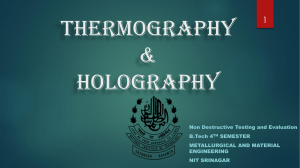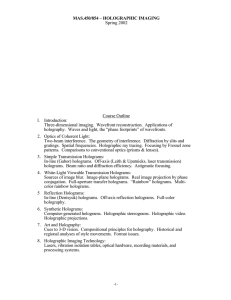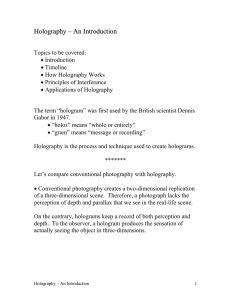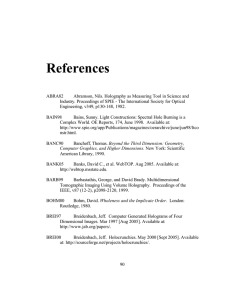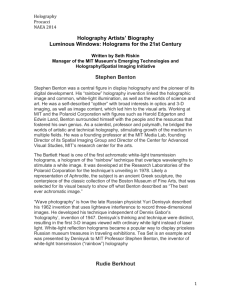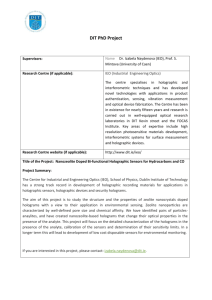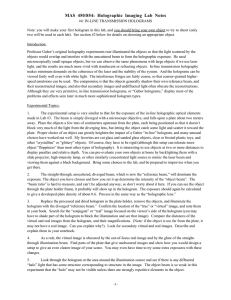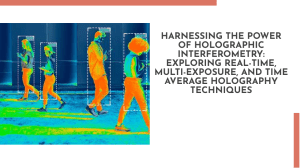BUS 620 Research Abstract Seven “Holography”
advertisement
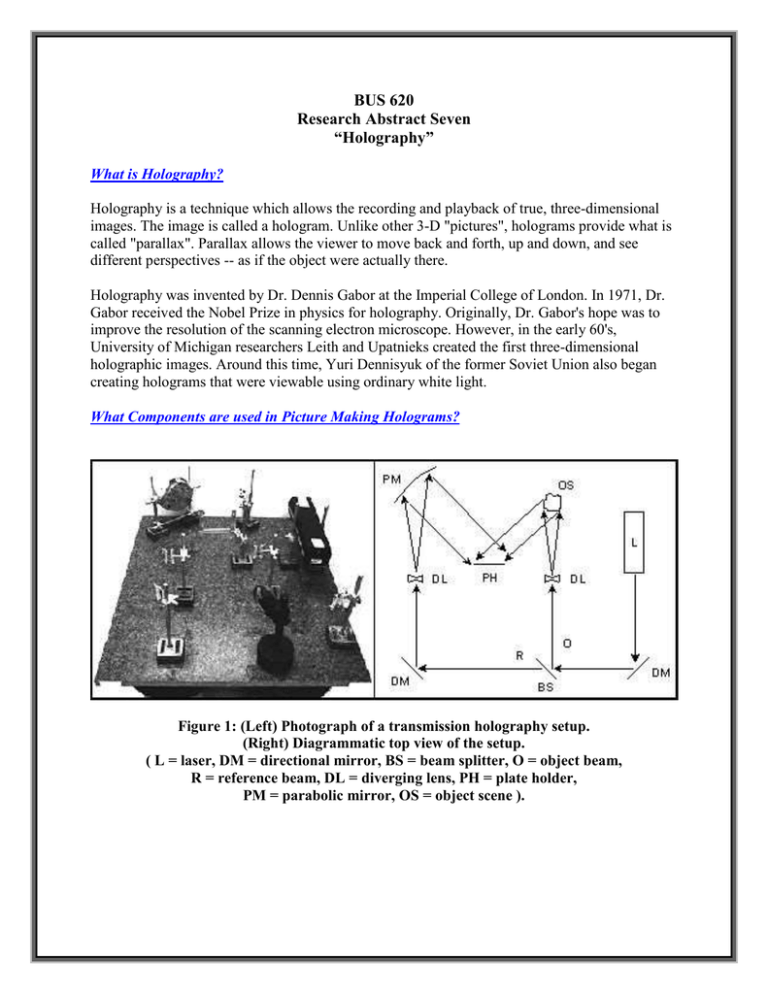
BUS 620 Research Abstract Seven “Holography” What is Holography? Holography is a technique which allows the recording and playback of true, three-dimensional images. The image is called a hologram. Unlike other 3-D "pictures", holograms provide what is called "parallax". Parallax allows the viewer to move back and forth, up and down, and see different perspectives -- as if the object were actually there. Holography was invented by Dr. Dennis Gabor at the Imperial College of London. In 1971, Dr. Gabor received the Nobel Prize in physics for holography. Originally, Dr. Gabor's hope was to improve the resolution of the scanning electron microscope. However, in the early 60's, University of Michigan researchers Leith and Upatnieks created the first three-dimensional holographic images. Around this time, Yuri Dennisyuk of the former Soviet Union also began creating holograms that were viewable using ordinary white light. What Components are used in Picture Making Holograms? Figure 1: (Left) Photograph of a transmission holography setup. (Right) Diagrammatic top view of the setup. ( L = laser, DM = directional mirror, BS = beam splitter, O = object beam, R = reference beam, DL = diverging lens, PH = plate holder, PM = parabolic mirror, OS = object scene ). What are the uses of Holography? Holographic optical elements make lights brighter Holograms were introduced onto MasterCard credit cards as a security device in 1982 and the 1984 March issue of National Geographic magazine was the first major publication to put a hologram on its cover It also took affect on the Australian $10 note in 1988. CD-ROM drives work faster and machines see better They are used in a variety of industrial machines, resulting in the manufacture of smaller, cheaper, more efficient machines at a much faster rate and with more precision than ever before Every day consumers experience industrial holography in the form of retail scanners for pricing and reading bar codes This same technology tracks products from the warehouse, during transportation, to delivery Holographic optical elements (HOEs) make heads-up displays possible as well as the pick-up head for compact disk (CD) readers to work extremely fast And particularly in holographic spectroscopy, interferometry, microscopy, telescopy and other measuring instruments Coming onto the market next year will be the first prototype optical computers, which will use holograms as storage material for data. These machines deliver trillions of bits of information at speeds faster than current computers deliver millions. These computers are expected to have as a revolutionary effect on society as the airplane These machines will move rapidly into industrial and corporate applications as servers. They will be the new heavy weights in a $25 billion data storage market INDUSTRIAL MARKET SHARE FOR HOLOGRAPHY $ Million Percent Scanning 1,000 60 Testing 455 29 Holographic Data 25 2 Holographic CAD, TV, and other uses 55 3 100 Holographic Optical Elements Source: Business Communications Company, Inc. 6 Industrial Hologram An advertising appeal that materializes in space and evolves Airline Pilot Heads Up Display

